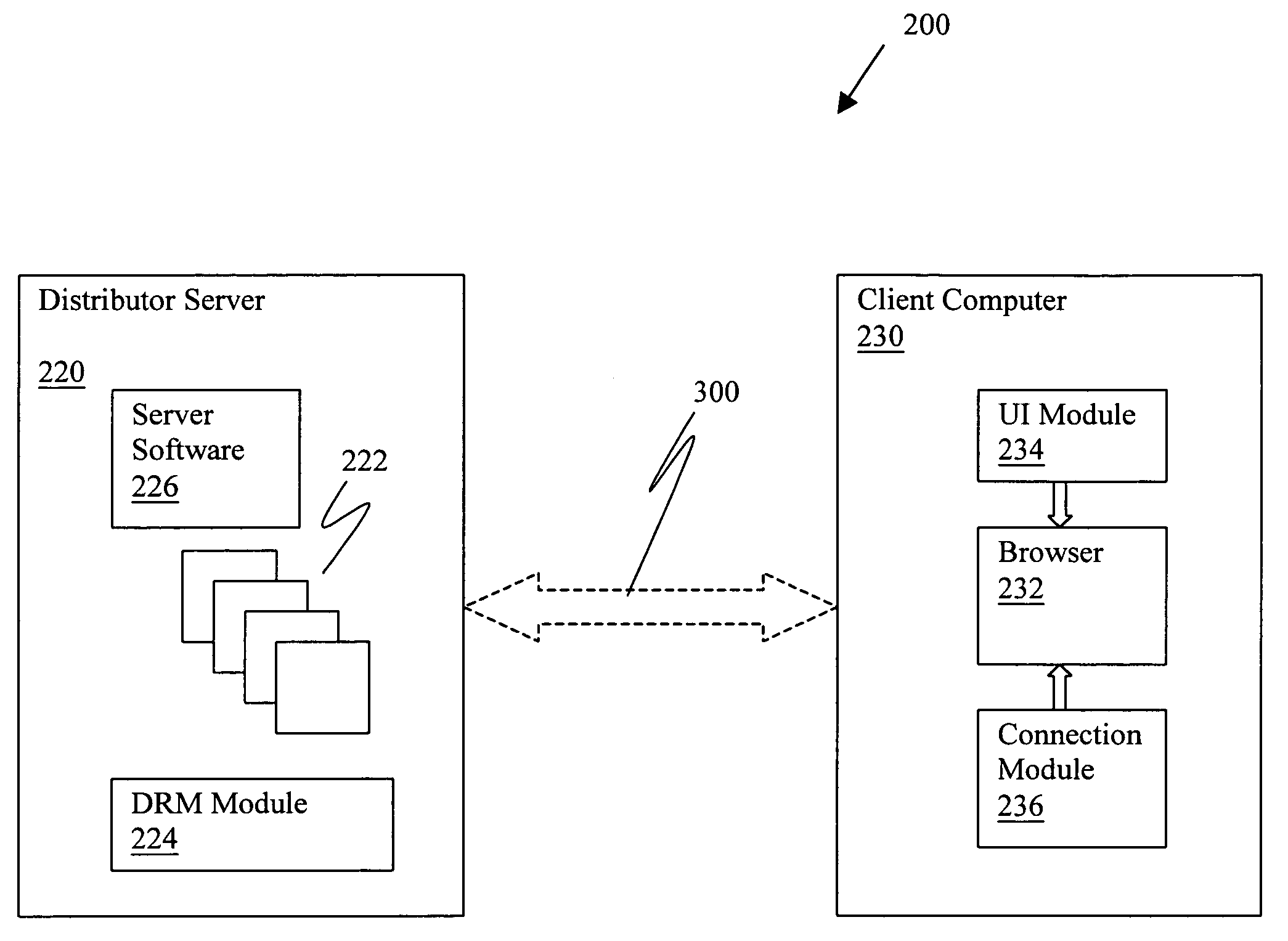Document distribution management method and apparatus using a standard rendering engine and a method and apparatus for controlling a standard rendering engine
a document distribution and management method technology, applied in the direction of unauthorized memory use protection, instruments, television systems, etc., can solve the problems of content owners' intellectual property rights being lost during the distribution and use of digital documents, and it is easy to copy, modify and redistribute unprotected digital documents, and it is more difficult to copy them without authorization
- Summary
- Abstract
- Description
- Claims
- Application Information
AI Technical Summary
Benefits of technology
Problems solved by technology
Method used
Image
Examples
Embodiment Construction
[0033]The invention is described below with reference to a preferred embodiment. It will be apparent that the invention can be embodied in a wide variety of forms, some of which may be quite different from those of the disclosed embodiment. Consequently, the specific structural and functional details disclosed herein are merely representative and do not limit the scope of the invention.
[0034]FIG. 1 is a block diagram of a conventional model for a system for the electronic distribution of documents, which as defined above, may include correspondence, books, magazines, journals, newspapers, other papers, software, audio and video clips, and other files objects, and the like.
[0035]Author 110 creates original content 112 and passes it to a distributor 120 for distribution. Ordinarily, author 110 is the creator of the content. However, the term “author” as used herein can be the creator, owner, editor, or other entity controlling the content or an agent (e.g. a publisher) of one of those...
PUM
 Login to View More
Login to View More Abstract
Description
Claims
Application Information
 Login to View More
Login to View More - Generate Ideas
- Intellectual Property
- Life Sciences
- Materials
- Tech Scout
- Unparalleled Data Quality
- Higher Quality Content
- 60% Fewer Hallucinations
Browse by: Latest US Patents, China's latest patents, Technical Efficacy Thesaurus, Application Domain, Technology Topic, Popular Technical Reports.
© 2025 PatSnap. All rights reserved.Legal|Privacy policy|Modern Slavery Act Transparency Statement|Sitemap|About US| Contact US: help@patsnap.com



